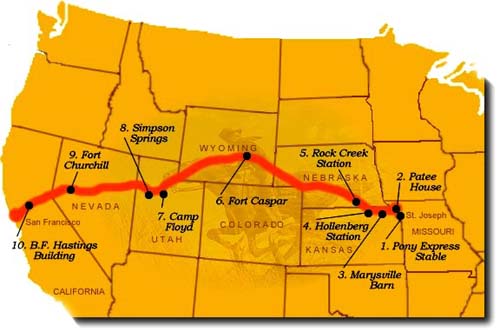In the 1970s, our neighbor, Hazel Castevens, told us that in the 1880s, the Wells Fargo Pony Express dropped off the mail at what today is the west end of the Crescenta-Cañada Family YMCA parking lot, right near the entrance to Rancho Canyada Road.
A few weeks ago, my husband, Len, and I visited the Wells Fargo & Co. Museum on Montgomery Street in San Francisco, where a historian named Marianne Babel burst our bubble. Babel is the vice president of Wells Fargo Historical Services. She is an official Wells Fargo historian and a gracious, helpful professional.
But her news was disappointing. She told us that the Pony Express did not have a route through La Cañada.

Worse still, the Pony Express was kaput by 1880. The Pony Express lasted for about 18 months, from April 3, 1860 to October 1861.
We were perplexed. Why would Hazel Castevens, an old-timer who heard the story from another old-timer, believe that the Pony Express ran through the parking lot of the YMCA?
Hazel had no motive to be untruthful. To the contrary, Hazel had been a solid La Cañada citizen. She worked as a pharmacist. Hazel valued precision and accuracy.
If the mail did not come via Pony Express, could Hazel's source have been referring to another mail service? We asked the question and found some clues.
A 1918 article by Robert G. Cleland, Ph.D, titled, “Transportation in California Before the Railroads With Especial Reference to Los Angeles,” provided some hints.
According to Cleland, the lack of local and transcontinental transportation was a major problem in Southern California during the 19th century. It was not only inconvenient, but an impediment to economic development.
Cleland said that as the state grew, “local transportation companies sprang up like mushrooms.” For example, by 1854, the local company of Alexander & Banning had 30 to 40 horses, 500 mules, 40 wagons and 15 stages running between Los Angeles and San Pedro. Two other companies ran similar operations along the same route. Cleland did not mention their names.
Could there have been similar routes up in the Foothills? Did the unnamed transportation companies send men on mules up to La Cañada?
Cleland noted that the Butterfield Overland Mail Trail, a stagecoach route which operated from 1857 to 1869, built small adobe stations at 10-mile intervals. “Between Los Angeles and San Francisco the route passed through San Jose, Gilroy, Pacheco Pass, Fresno City, Visalia, Tejon, French John's, San Fernando and a score of other points which at that time enjoyed a name and reputation.”
Could La Cañada have been one of the “score of other points?”
Babel suggested that we check the seminal history of the Butterfield Overland Mail Trail, written in 1947 by Roscoe and Margaret Conkling. The multivolume history is out of print. Copies sell online for $300 to $500.
Babel gave us a photocopy of one of the maps from the Conkling books. It was a map of the various Butterfield routes. We carefully checked the map. None of the routes went near La Cañada. From El Monte, the Butterfield stagecoaches traveled to Los Angeles and then to the Cahuenga Pass. The route did not pass through La Cañada.
And still we wondered: Were there other routes? Was this the only map?
To be continued...




No comments:
Post a Comment